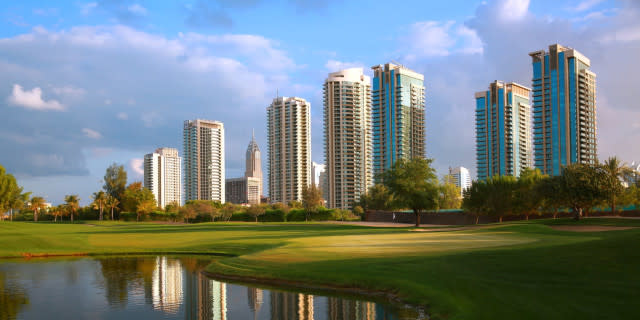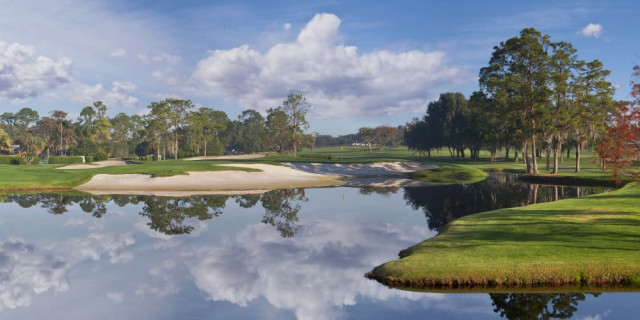10 Must Play Golf Courses in England
WHEN people think about golf in the United Kingdom, they usually dream about playing St Andrews and the other fabulous courses in Scotland. If that is you, perhaps the time has come to consider what England has to offer.
There is much else to enjoy. In the northeast you will enjoy spectacular countryside and meet some of the friendliest people on earth. Head to the northwest and visit two of the most vibrant cities in Europe in Liverpool and Manchester, or head to Blackpool and its all-year-round holiday season, pleasure beach and tower. Or travel to the Midlands and take in Shakespeare country or the hustle and bustle of cities such as Birmingham, Coventry and Leicester. The locals call Yorkshire 'God's country' - spend a day or two there and you will quickly realise why as much of the countryside is breathtaking.
If you think that Pebble Beach is special, try standing on the clifftops in Cornwall and watch the waves crash in, then go and sample a Cornish pastie and a pint of cider. Taste the clotted cream and walk along the sandy beaches of Devon, complete with its palm trees.
Or head to London, arguably the best capital city anywhere on the planet. Buckingham Palace, the Tower of London, museums and parks galore, Soho, the West End and its theatres, bars, clubs and restaurants galore – no matter what you are looking for, you will find it in London.
And no matter which part of England you choose to visit, you will know that you are never far from a world-class golf course. Here, we offer you 10 must play courses, but there are many, many more.
Sunningdale Golf Club
Green fee £205; November 1-March 31, £125
Par 70, 6,627 yards, heathland
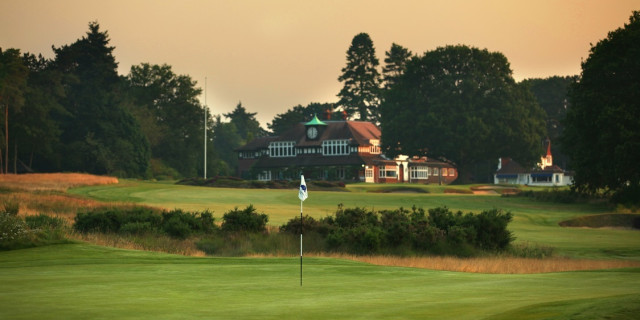
The Old Course at Sunningdale is the Mona Lisa of heathland golf courses. It is a work of art. You will be open-mouthed at the beauty of the place if you have never played here before. The greens are among the best you will ever find. Always in fantastic condition, they feature lots of borrows and slopes and many wonderfully-crafted bunkers. The heather gives the course a glorious purple hue. It has held many, many top tournaments and is a favourite among the world's best players. One glance at the place and you will know why. The finishing stretch is terrific. The 15th is a 239-yard par three, that will need a driver for most people to reach the green. There are bunkers left and right and a heather-filled bank on the right. The 16th is a par four measuring 434 yards, with the second shot played uphill - a cross bunker short of a well-bunkered green is to be avoided. The 17th, measuring 425 yards, features a downhill tee shot with a copse on the left and a bunker on the right that can't be seen from the tee. The approach is played to a sloping green. The final hole measures 423 yards, with a fairway that slopes from left to right, where a bunker awaits. Avoid that and you have to clear another cross bunker. There is an interesting story about the bunkers protecting the final green - they were created when the Luftwaffe bombed the area during the Second World War and were left because they improved the hole!
Woodhall Spa
Green fee £76, November 1-March 31, £53
Par 73, 7,080 yards, heathland
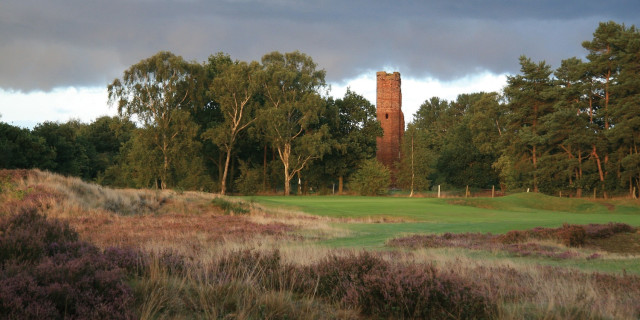
Home of the English Golf Union, Woodhall Spa has two courses, the Hotchkin and the Bracken. They are both excellent examples of heathland golf at its best, but the Hotchkin is something special and features high on every 'best of' list. It is set among glorious woodland and is famous for its bunkers, some of which you may go into and never be seen again. You are going to have to accept that somewhere along the line you are going to end up in the sand, so make sure you know how to get out. Keeping the ball in play is essential – trees, gorse and heather lie in wait. Get in the heather and you will be happy just to get the ball back in play. Do not miss the greens on the wrong side. The second hole, measuring 442 yards, can be played two ways - hit your drive to the wide part of the fairway and you face a long approach, or try to drive between the bunkers and go in with a short to medium iron. The green slopes from front to back. The eighth is a challenging par three of 209 yards played to an elevated green. There are three bunkers to the left but you must at all costs avoid the huge trap to the right. The 18th is a magnificent par five measuring 540 yards and usually played into the wind. The tee shot is extremely demanding and ideally needs to be hit long and left. Do not go right or you will be blocked out by a giant oak tree. There are lots of bunkers on both sides of the fairway. For most of a us, a great three-shot hole.
Walton Heath GC
Green fee: £150; December 1-February 28, £75
Par 72, 7,420 yards, parkland

There are two courses at Walton Heath, the most famous of which is the Old Course, which is 7,420 yards long from the back tees. It hosted the Ryder Cup in 1981, and the European Open has also been played here. It is a stunning heathland layout. James Braid, the five-time Open champion, was club professional until 1950 – and it is little wonder that he didn't want to move anywhere else. It is not far from the centre of London, but you would never know it as the course is so tranquil. Most of the bunkers are surrounded by heather – it may look pretty but if it swallows up your golf ball then the strength of your wrists is going to be tested to the full. The fairways consistently provide tight lies – hit the ball properly and it will stop quickly enough on the magnificent greens. The second hole is a magnificent 475-yard par four - drive into a valley and you will be left with an approach of about 200 yards played uphill. It requires two splendid hits. The 16th is a par five measuring 535 yards framed by trees and featuring a couple of bunkers that you don't want to visit, especially the one slap bang in the middle of the fairway. The 18th is a 479-yard par four, with bunkers on the left to be avoided. There is also a cross bunker short of the green.
Aldeburgh GC
Par 68, 6,603 yards, heathland
Green fee: £80 (twilight offers); December 1-February 28, £55
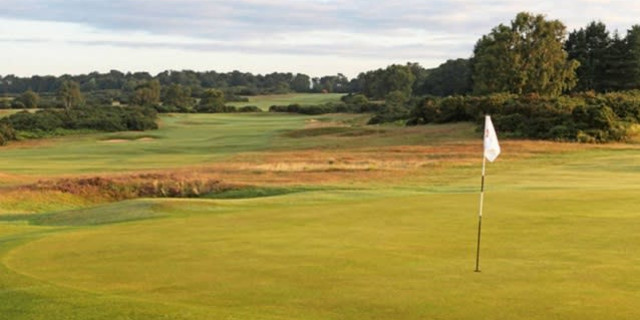
This is the best golf course in Suffolk – bar none. It is 'only' a par 68 but it is a really stern test, and anybody who is a member here will stroll round any other course they play comfortably below their handicap. It has a wonderful old clubhouse with wood panels and leather seats and an artisan membership who have their own separate facilities. Fourballs are discouraged in an effort to speed up play. The fairways are tight and well bunkered and most of the par fours require tee shots to be struck with pinpoint accuracy in order to provide the right lines to the greens. The four par threes are glorious and there isn't a single 'gimme' hole on this wonderful course. The third is 429 yards long and plays uphill. The second shot is blind, played to a marker post, with a bunker waiting on the right of the green. The fourth hole is only 119 yards long. Easy, right? Erm, no. In the first place, the green is large - and it slopes severely from left to right. Oh yes, and the bunkers feature sleepers. The 16th, at 478 yards, is the longest hole at Aldeburgh. Cross bunkers are to be avoided on this hole, which features a sloping fairway and is normally played into the wind. The closing hole is 435 yards and, again, plays uphill. Once more, you will usually have to deal with the wind blowing in your face. There are bunkers left and right at driving distance before an approach played to a long, narrow, undulating green - it measures 30 yards and is well protected by bunkers.
Hillside Golf Club
Green fee £150, November 1-February 29, £65
Par 72, 7,029 yards, links
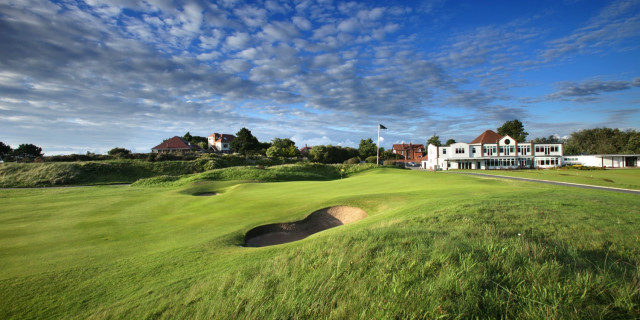
One of many great courses in and around Southport, near Liverpool, and, in your correspondent's humble opinion, the best of the lot – and that includes Royal Birkdale. A fabulous clubhouse, built in the 1930s and looking more like a large house, overlooks the first tee and 18th green. From the back tees it measures just over 7,000 yards. Greg Norman once described the back nine as the best in Britain. High praise indeed. The first hole measures just under 400 yards, with the railway line on the left side of the fairway and plenty of well-placed bunkers. It is a terrific golf course, requiring accuracy from the tee, and includes some great, testing par threes. Gorse and pine trees feature in abundance. The fifth is a wonderful par five. It is 562 yards long with a stream on the left, trees, plenty of bunkers and land sloping from right to left. The seventh is a memorable 170-yard par three played to a raised green which will hold a well-struck shot, but go left and you can run up a cricket score. The 15th is 425 yards long. It is a dogleg, with bunkers to be avoided - you will need to hit your tee shot 250 yards to carry them. The green is surrounded by sand dunes. The closing hole is 439 yards but is played from an elevated tee - leave your drive short of the fairway bunkers and then avoid the deep traps protecting the green. The club likes to boast that the bar is just 25 yards from the 18th green.
Royal West Norfolk
Green fee £85 singles, £60 pp greensomes; winter, £65 singles, greensomes £50
Par 71, 6,457 yards, links
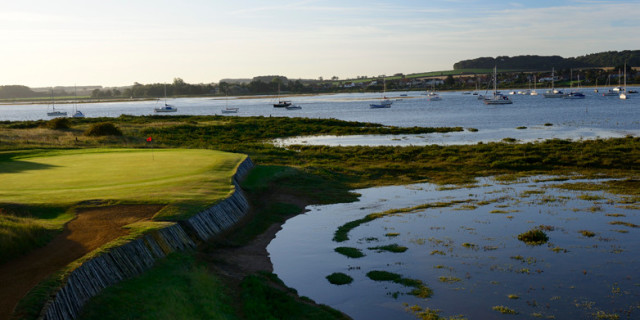
No fourball play is allowed at Royal Norfolk. The club does this to keep play moving and to ensure that visitors get the most from their experience on this fabulous course, in Brancaster. Uniquely, you have to cross the beach to get to the first tee. There are also double fairways and sleepered bunkers – trust me, you don't want your ball to finish at the base of the sleepers. Royal West Norfolk has a charm all of its own and has good links with local hotels and bread and breakfast establishments. It is a par 71 and measures 6,457 yards. The front nine is 400 yards shorter than the inward nine, but it is the home holes that represent the biggest challenge, with the holes running alongside the sea and usually played into the wind. The final three holes measure just 337, 392 and 381 yards. It sounds simple enough, but throw in the wind, narrow fairways, rough and some ferocious bunkers and if you walk off having parred all three then you are going to be a very happy golfer indeed!
Royal Cinque Ports
Green fee £130, November 1-February 28 £65
Par 71, 7,245 yards, links

The best course in Kent, according to many locals – and that is a BIG claim. Snow is the only thing that closes this course, which has fast running fairways and a finishing stretch of holes that is regarded as one of the toughest you will ever face. So should you play the opening 11 holes well and feel that you are coasting, you could be in for a shock. It measures 7,245 yards and is a par 71. The second nine consists of eight par fours and a solitary par three. The 12th is 463 yards, the 13th is 478 yards, the 15th 474 yards, the 16th 496 yards and the 18th is 455 yards. Oh yes, and that par three, the 14th, measures 221 yards and anything that finishes short will find its way to the left, while on the right are three impressive bunkers. Ideally, you should start the ball to the right and draw it back. The 16th is the best, and toughest hole on the links. Henry Cotton regarded it as one of the best 18 holes in England. You can either attempt to carry the cross bunker with you drive or play short, hit your second into the flat part of the fairway and leave yourself with a short approach. The elevated green is small and undulating. The final hole calls for a drive aimed towards the right side of the bridge that sits across a stream that is to be avoided at all costs. The second is played to another elevated green which is further away than it looks. There are no bunkers on this hole – it is tough enough without them. Phew!
Royal North Devon – Westward Ho!
Green fee £65, November 1-March 31 £35
Par 72, 6,682 yards, links
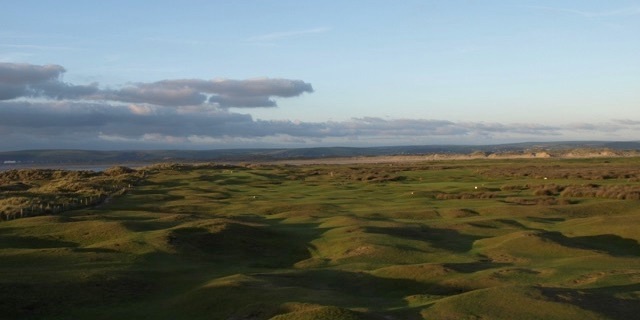
A gem, and a rare example of links golf at its purest, the way the game was meant to be played. If you are looking for a perfectly-manicured links layout then you should head somewhere else. Sheep wander the fairways, although they are prevented from wandering on to the greens by well-positioned ropes. It is also the oldest course in England, founded in 1864 – and has barely changed in all those years, which is a tribute to its classic design. When you think of links courses you imagine standing on a tee and looking out at undulating fairways, with the sun casting glorious shadows – in other words, you think of Westward Ho! The eighth is a 192-yard par three normally played into a crosswind to a large green well protected by sand. The key is to try to land your tee shot just short of the green and let the ball run up to the hole. The 13th hole is going to be unlucky for some - a par four, it measures 442 yards. Your drive should be struck down the left side of the fairway, leaving an approach to the smallest putting surface on the course - it is also raised, which means that almost every shot hit to it will run off. The 17th is a 555-yard par five that requires a long, straight drive. It is out of reach in two for most, which means a third shot played over a road and ditch to a two-tier green - the difference is that the lower tier is at the back of the green. Bunkers on either side await the wayward approach.
Stoke Park Golf Club
Green fee £155, winter £85
Par 71, 7,107 yards, parkland
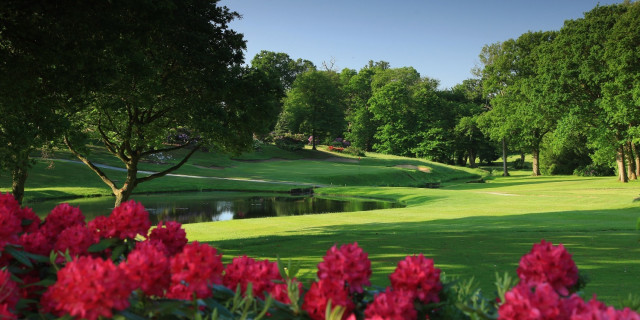
Harry Colt designed Stoke Park more than 100 years ago,and it is as magnificent and challenging today as it was back then. It was also the setting for James Bond's clash with Goldfinger in the classic Bond movie made in 1964. One delightful quirk about Stoke Park is its halfway house – you are allocated a 10-minute break and if you choose to take it then you must give the group behind you the chance to play through. The course measures 7,107 yards and is a par 71. The seventh hole is a 150-yard par three that inspired the design of the 16th at Augusta National. The 17th is a 420-yard par four, with a bunker and trees waiting to catch any drive hit right. A stream meanders some 30 yards short of the green. A classic golf course.
Wentworth, West Course
Green fee £110-£210
Par 73, 7,281 yards, parkland
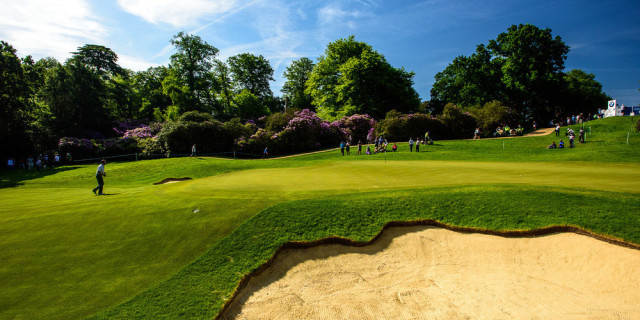
Home of the BMW Championship, the West Course has been redesigned by Ernie Els, the former US Open and Open champion. Set amid hundreds of acres of woodland, the course makes great use of the trees, which frame many holes and repeatedly come into play. The greens are among the quickest you will ever play. This course offers a serious test, especially after the alterations made by Els. If you are having a bad day, take time to enjoy the scenery and the beautiful homes that are dotted around the perimeter of the course. The first is a monster par four with a second (or third) shot hit over a valley to a sloping green. But it is the two finishing par fives that make the West Course. On the 17th, anything to the right is dead and buried – and that is the way the fairway slopes. If you find the fairway you then have a blind second shot over a hill to a green that is the hardest on the course to read. The 18th, with the stream running in front of the green, is a wonderful finishing hole. Bunkers to the left find hundreds of drives – the key is to hug the right side of the fairway, which also offers the best angle for the second shot, whether you are laying up or going for the green.
Related Content: Ten of the Best Courses


